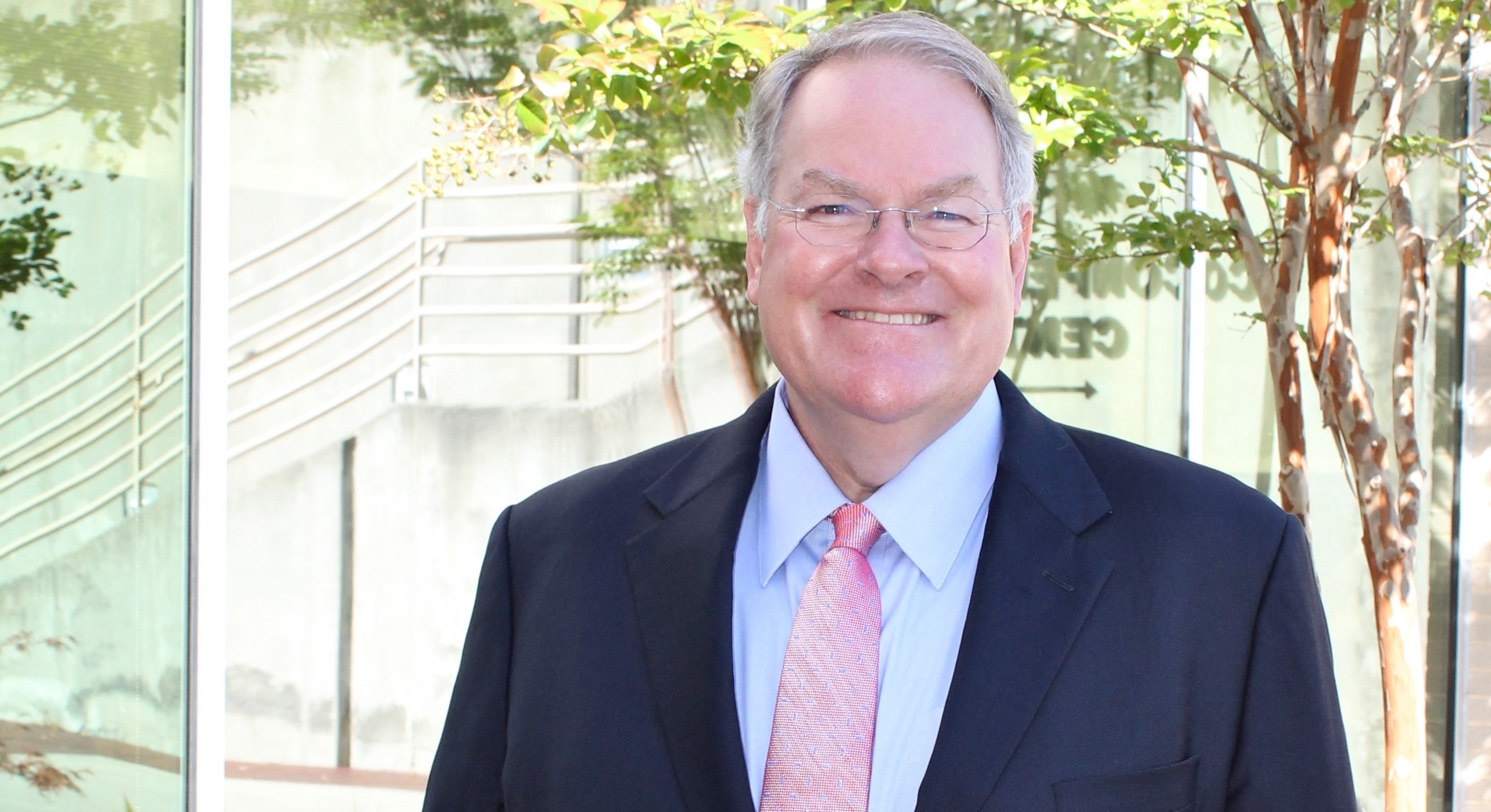The Virginia question — Could a Wellmont-MSHA merger happen with no COPA law?
By Jeff Keeling
“The two large systems in Southwest Virginia that are providing most of our care are Bristol and Johnson City-based. So it’s a big deal for us what happens here.” Dr. Bill Hazel – Virginia Secretary of Health and Human Resources
Dr. Bill Hazel had some familiarity with the greater Tri-Cities before accepting the post as Virginia’s Secretary of Health and Human Resources in early 2010. An orthopedic surgeon, Hazel volunteered at Remote Access Medical (RAM) clinics in Southwest Virginia, where he also saw uninsured patients from Tennessee who would make the trip up for a chance at pro bono health care.

Virginia Secretary of Health and Human Resources Dr. Bill Hazel during a visit to Bristol, Va. (Photo by Jeff Keeling)
Hazel, who visited Bristol Sept. 22 for a Wellmont-sponsored health symposium, could play a key role were Wellmont and Mountain States to propose a merger. Unlike Tennessee, Virginia does not have Certificate of Public Advantage (COPA) legislation on the books, and some type of state dispensation regulating the system’s Virginia components would likely involve his office.
Hazel met Sept. 21 with “hole in the wall gang” members and Virginia state legislator Terry Kilgore. They outlined the Wellmont situation from their perspective – that favorable to a local merger – and answered questions. During an interview with the Business Journal at Bristol, Hazel said he had been previously aware of Wellmont’s strategic process, but didn’t know it well. He said it was an important issue for him to gather information on, because “it will likely impact the public segment somewhere.”
Hazel touched on the vast changes sweeping the health care landscape as they affect factors ranging from antitrust and competition issues to population health. With respect to the Wellmont/Mountain States patient population mix, he said general population health in Southwest Virginia compared with the rest of the state is “not a terribly happy story … whether it’s obesity, substance abuse and so forth. Not trying to paint too bad a picture, but there are still some significant issues.”
Those challenges pre-date the Affordable Care Act, but the ACA and other trends in health care appear to have colored Hazel’s potential openness to a Wellmont-Mountain States partnership governed by some type of regulatory mechanism for Southwest Virginia designed to protect consumers against overpricing.
“If you go back to read Adam Smith, 1776, he said if you have this ‘invisible hand’ our free market friends like to have requires four things:
- “It requires a willing buyer. Who is actually buying here? Is it the employers for their employees, the insurer for the patient? It’s really murky.
- “Then you have to have a willing seller. Alright, so, we have issues where for instance hospitals with EMTALA (a federal requirement that hospitals treat patients in emergency rooms regardless of ability to pay) have to provide services. We crossed that bridge on coverage with EMTALA.
- “Number three is, no barriers to entry. Think about the barriers to entry. There are cost barriers, there’s CON, legal and regulatory barriers. There are certification, accreditation academic silos that are built up and so forth that create barriers to entry.
- “And the fourth thing for a functioning market is transparency, of which we have very little. No one knows what anything costs when you buy it.
“I think it probably is a reach to say the markets are working real well in health care right now, so it would not be unusual to say, ‘well what are our other choices?’ In Virginia we are typically market/competitive-based and that’s what I think the General Assembly thrives on. It would be an interesting argument to make that we should substitute a market-based economy, or a perceived market-based economy, with one that is highly regulated. That doesn’t mean that it shouldn’t happen and it doesn’t mean that it won’t happen, but someone’s going to have to make the case for why it would be good.”
Hazel said he was open to different ideas about moving toward maximizing access and results in the challenging demographic and fiscal health care environment, including how that might work with cost, and put it in economic development terms. He mentioned the example of Michelin, which employs more than 7,000 people in the Greenville-Spartanburg (S.C.) metro, but was having severe issues with the prevalence of Type II diabetes among those employees. The company approached a local hospital system, eventually convincing it to work with Michelin to develop a more effective way of caring for employees so affected.
“They told the health care powers-that-be their workers with Type II diabetes suffer from “presenteeism,” (attending work despite illness, usually leading to reduced productivity.
Hazel said company representatives noted their insurance payments were rising every year despite Michelin having “done everything good companies are supposed to do,” including charging the employees more for their insurance, co-payments and deductibles go up. Despite it all, Hazel said, Michelin told the hospital system – and by extension the community – that the workforce couldn’t compete making tires for a living.
“I imagine this area would welcome a large number of jobs tomorrow. I know on our side of the border we would. There are probably only two or three localities in Virginia that wouldn’t want that plant. But are we any better in this region?”
Hazel said the U.S. simply can’t afford to continue spending 18 percent of GDP on health care. He said that figure represents 6.5 percent higher rate than Switzerland, the second-highest country.
“The entire U.S. defense budget is only about 3.6 percent of GDP,” Hazel said. “So we’re spending almost twice the U.S. defense budget in excess of Switzerland, and Switzerland covers everybody. We have a federal government that fuels both supply and demand. You’ve got this fee-for-service system that’s sort of ingrained. But even more than that, if you go back to EMTALA, what we have said is that we’ll take care of you in the emergency room. When you’re sick enough, you come to the emergency room. So we get that late patient at the most expensive place. With no guaranteed followup, liability issues, all these other things, that’s not the place to have relationships and take care of chronic problems. So it only makes sense to try to move that market back earlier in the system and get more into the preventive realm. And that requires a payment system. That’s what Medicaid does for those up to 138 percent of poverty if you expand.”
This region faces one of the bleaker scenarios in the face of all this – higher utilization rates, no Medicaid expansion (yet), and a sicker, poorer population with a preponderance of negative health factors. As a result, Hazel implied, health care leaders’ decisions at the local, state and federal levels regarding the hospitals in the Tri-Cities are as important as they’ve ever been.
“If you have a hospital system that’s out there and says, ‘we need capital,’ there’s something going on here that we need to pay attention to. The issue for Virginia I think in this – because these are Tennessee systems that will impact Virginia with what they do – we need to be sure from the Virginia side that we aren’t adversely impacted by it, however it plays out.”




